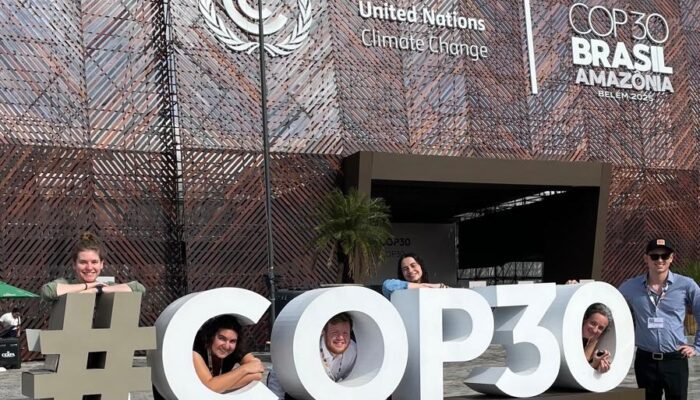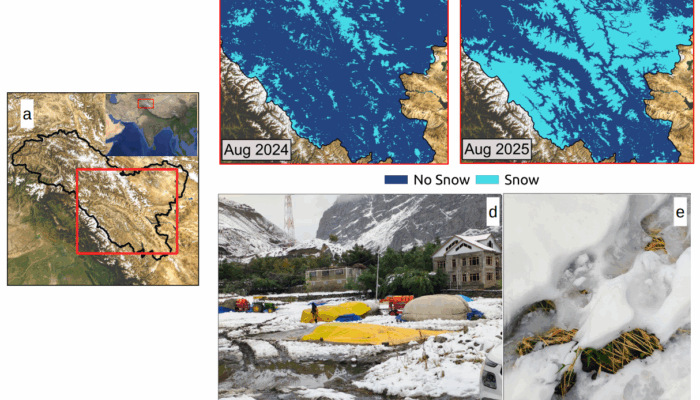Jane Qiu shares her experience of shadowing atmospheric scientists some 5000 metres above sea level after being awarded the EGU’s science journalism fellowship. To find out how she got there, see her last post, A sky-high view on pollution in the Himalayas: the journey. Lab with a view After six days of strenuous hike, the Pyramid was finally in sight. At the foot of the majestic Khumbu Glacier, ...[Read More]
If you didn't find what you was looking for try searching again.
GeoLog
Geosciences Column: Stitching the seafloor together
You’re standing on a mountain peak, with a fabulous field site before you. Wanting to capture the moment, you take out your iPhone, snap a dozen pictures and your mobile stitches them together beautifully – a nice record to show your colleagues back in the office. Unfortunately, not all field sites are so easy to capture – especially when you need to do a little science with the images. Seafloor p ...[Read More]
GeoLog
Geosciences Column: How curbing HFC emissions could reduce warming
Carbon dioxide is without a doubt the most famous of warming culprits. But would reducing emissions of this greenhouse gas be enough to mitigate climate change within this century? A recent paper published in Atmospheric Chemistry and Physics focuses on a less known substance that, if phased out, could avoid as much as 0.5 °C of warming by 2100. Hydroflurocarbons (HFCs) have an interesting history ...[Read More]
GeoLog
GeoCinema Online: Space & Planetary Science
If you were at our General Assembly, you probably spotted GeoCinema, or took a moment to catch your breath between sessions and relax with a geological film. But with all the science to be heard and discussions to join, watching the full programme would have been impossible. How do we get around this? By bringing GeoCinema straight to your living room! Over the next few weeks we’ll be sharing a de ...[Read More]
GeoLog
Imaggeo on Mondays: Sunset on the Black Sea coast
In the context of human history, few bodies of water are as storied as the Black Sea, located at the juncture of Europe, Asia, and the Middle East. Countless cargo ships and frigates have sailed its waters, over 1,100 km in length from east to west, daunting enough that the Ancient Greeks believed its eastern shores (now Georgia) marked the edge of the known world. However, perhaps the Black Sea’s ...[Read More]
GeoLog
How interviews of famous geologists can help you learn more about geosciences
Today’s guest post comes from Daniel Minisini, a geologist with a passion for filming and philosophy who created a resource for the geosciences community called minigeology.com. In this post, he tells us a bit more about the website, and the inspiration behind the interviews he conducts and posts online. Hi! I am Daniel, a sedimentologist and stratigrapher trained as a marine geologist by my ...[Read More]
Cryospheric Sciences
Speaking Up for the Cryosphere at COP30
During the climate negotiations at COP30, the global importance of a warming cryosphere was stressed in various formats. The UNFCCC Conference of Parties (this year’s COP30) marks the yearly global climate negotiations which formed the aim to limit global warming to well below 2 °C (the 1.5 °C target) with the Paris Agreement at COP21 in 2015. These huge conferences of ten thousands of people feel ...[Read More]
GeoLog
GeoTalk: Anjana Khatwa, author of ‘The Whispers of Rock’
This month for GeoTalk we were lucky enough to speak with Anjana Khatwa, the author of a new geoscience book ‘The Whispers of Rock’. Dr Anjana Khatwa is an award-winning Earth Scientist, science communicator, writer, presenter and advocate for diversity in natural heritage spaces. For over twenty years, Anjana has worked as a learning and engagement professional in the natural heritage ...[Read More]
Cryospheric Sciences
When August Brought Snow: Unseasonal Snowfall Disrupts Life in Ladakh’s High Valley Village
August in Ladakh is a time of golden fields and harvest songs, not snowstorms. Yet in 2025, this rhythm broke. Panikhar village in Ladakh woke beneath fifteen centimetres of snow, an unseasonal blanket that changed the functioning of the valley and stunned its people. What began as a glaciological field trip turned into a firsthand encounter with climate uncertainty. This blog captures those extra ...[Read More]
Geodesy
Expanding the picture: Franck Ghomsi
What does a geodesist look like? And what happens if you don’t “look the part”? Today, Franck Ghomsi, a Black African scientist, takes us along on his journey between South Africa, Canada and Cameroon. Franck does not only research the impact of climate change on coasts with geodetic techniques, but at the same time became an expert in self-motivation, battling racism and fightin ...[Read More]




